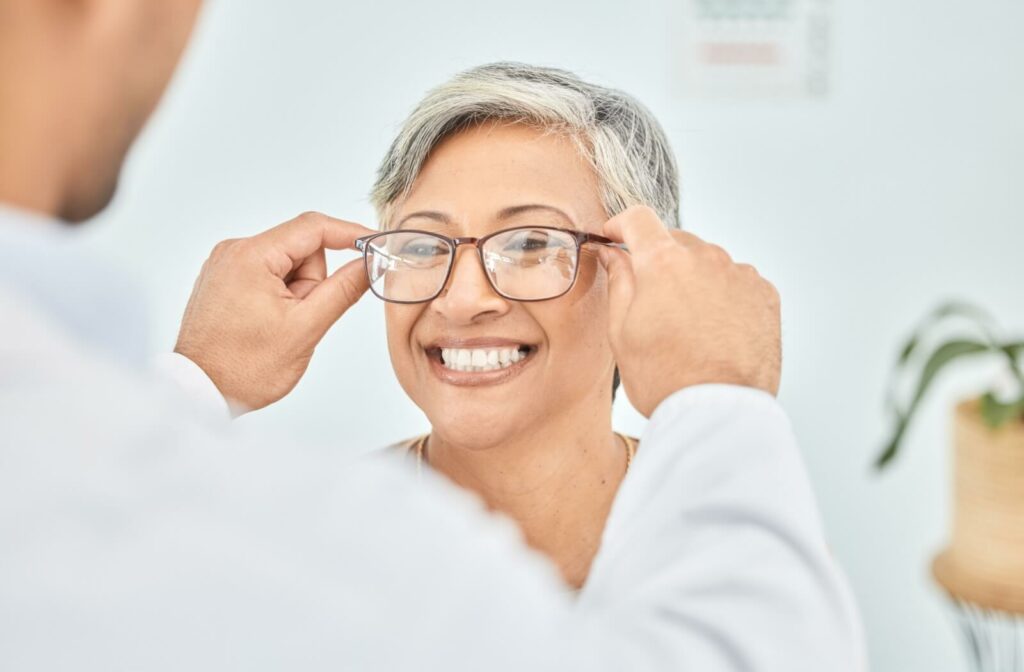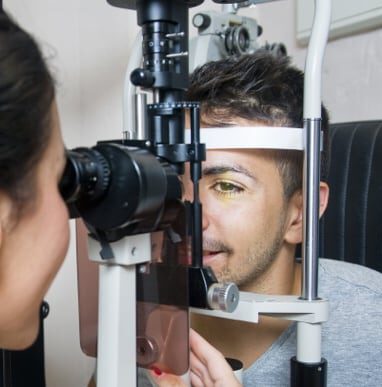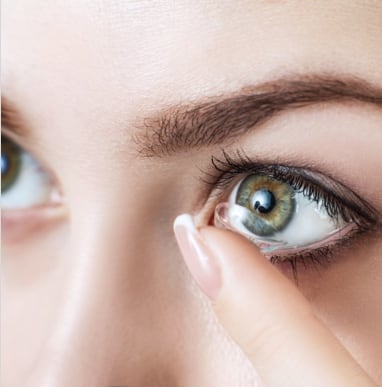When it comes to vision problems, terms like “hyperopia” and “presbyopia” can sound confusing. The key difference is that hyperopia, or farsightedness, affects people of all ages and makes close-up vision blurry, while presbyopia is age-related and typically starts around 40. While both conditions affect your ability to see clearly up close, they have different causes, symptoms, and treatments.
At Vision Care Center in Peoria & Washington, we’re here to help you and your family understand your eye health. If you’ve been noticing changes in your vision, our friendly team is ready to guide you toward clear, comfortable sight.
What is Hyperopia?
Hyperopia, commonly known as farsightedness, is a condition where distant objects appear clear, but nearby objects look blurry. This happens when the eye is too short or the cornea (the front surface of the eye) is not curved enough. As a result, light rays focus behind the retina instead of directly on it, making close-up tasks like reading, writing, or using your phone more challenging.
Common Symptoms of Hyperopia:
- Difficulty seeing objects up close
- Eye strain, especially after reading or screen time
- Headaches, particularly after focusing on near tasks
- Squinting to see more clearly
Hyperopia can affect people of all ages, including children. In fact, some kids are born with mild hyperopia, but their eyes often adjust as they grow. However, in adults, untreated hyperopia can cause discomfort and impact daily activities.
At Vision Care Center, we can diagnose hyperopia through a simple eye exam and recommend solutions such as prescription glasses or contact lenses. If you or your child are experiencing symptoms of farsightedness, it’s important to have an eye exam to keep your vision clear and comfortable.
What is Presbyopia?
Presbyopia is often mistaken for hyperopia because it also makes it difficult to see objects up close. However, presbyopia is an age-related condition that typically begins around age 40. It occurs when the eye’s natural lens becomes less flexible, making it harder to focus on nearby objects.
Why Does Presbyopia Happen?
As we age, the lens inside the eye gradually loses its elasticity. When you’re young, this lens can easily adjust its shape to focus on objects at different distances. By middle age, however, the lens stiffens, and it becomes harder to shift focus for close-up tasks.
Common Symptoms of Presbyopia:
- Difficulty reading small print, such as books, menus, or labels
- Needing to hold objects farther away to see them clearly (often called “the arms aren’t long enough” problem!)
- Eye strain or fatigue when doing close-up work
- Blurry vision when switching between near and far distances
If you’re finding yourself reaching for reading glasses more often or squinting to read text messages, presbyopia might be the reason. The good news is that presbyopia can be easily corrected with the right eyewear or lenses.
At Vision Care Center, we offer a variety of solutions, from progressive lenses and bifocals to reading glasses and multifocal contact lenses. Our team can help you find the option that best suits your lifestyle and vision needs.

How Are Hyperopia & Presbyopia Different?
Hyperopia and presbyopia both make near vision blurry, but they differ in their causes and who they affect. Hyperopia occurs when the eye is too short or the cornea is too flat, causing light to focus behind the retina instead of on it. This condition can affect people of any age, including children, and is often corrected with glasses, contact lenses, or laser eye surgery.
Presbyopia, on the other hand, is part of the natural aging process. Starting around age 40, the lens inside the eye stiffens, making it harder to focus on nearby objects. Unlike hyperopia, presbyopia gradually progresses until it stabilizes in a person’s 60s. While the solutions for these conditions differ, some people may experience both simultaneously. In such cases, progressive lenses or multifocal contact lenses can correct vision at all distances, providing clear and comfortable sight.
Can You Have Hyperopia & Presbyopia at the Same Time?
Yes! It’s entirely possible to have both hyperopia and presbyopia. For example, someone who has been farsighted for most of their life may notice additional near-vision problems as they get older. This can feel frustrating, but there are solutions to address both conditions.
Options like progressive lenses or multifocal contact lenses can help you see clearly at all distances. These lenses have different zones for near, intermediate, and far vision, providing seamless focus whether you’re reading a book or driving a car.
How to Manage Hyperopia & Presbyopia
Clear vision is essential for living your best life, and both hyperopia and presbyopia can be easily managed with the right care. Here are a few ways to address these conditions:
Prescription Glasses
Glasses are the most common and effective way to correct both hyperopia and presbyopia. Options like single-vision lenses, bifocals, and progressive lenses can provide clear vision at different distances.
Contact Lenses
For those who prefer a glasses-free option, contact lenses can correct farsightedness and presbyopia. Multifocal contacts are especially popular for managing presbyopia, as they allow you to see both near and far clearly.
Lifestyle Adjustments
Simple changes like using good lighting, taking regular breaks during close-up tasks, and practicing the 20-20-20 rule (look at something 20 feet away for 20 seconds every 20 minutes) can help reduce eye strain.
Regular Eye Exams
Your vision changes over time, so regular eye exams are key to keeping your prescription up-to-date. At Vision Care Center, we recommend annual eye exams to monitor your vision and address any changes early.
The First Step to Manage Hyperopia & Presbyopia
Understanding the difference between hyperopia and presbyopia is the first step toward improving your vision and eye comfort. While hyperopia is often present from a young age, presbyopia is a natural part of aging that starts around 40. Both conditions can make near-vision tasks challenging, but with the right diagnosis and treatment, clear vision is within reach.
At Vision Care Center, we’re here to help you and your family see your best at every stage of life. With two locations in the heart of Illinois, our friendly team is ready to find the perfect solution for your needs. Book your appointment today at our clinics in Peoria or Washington and take the first step toward better vision!












